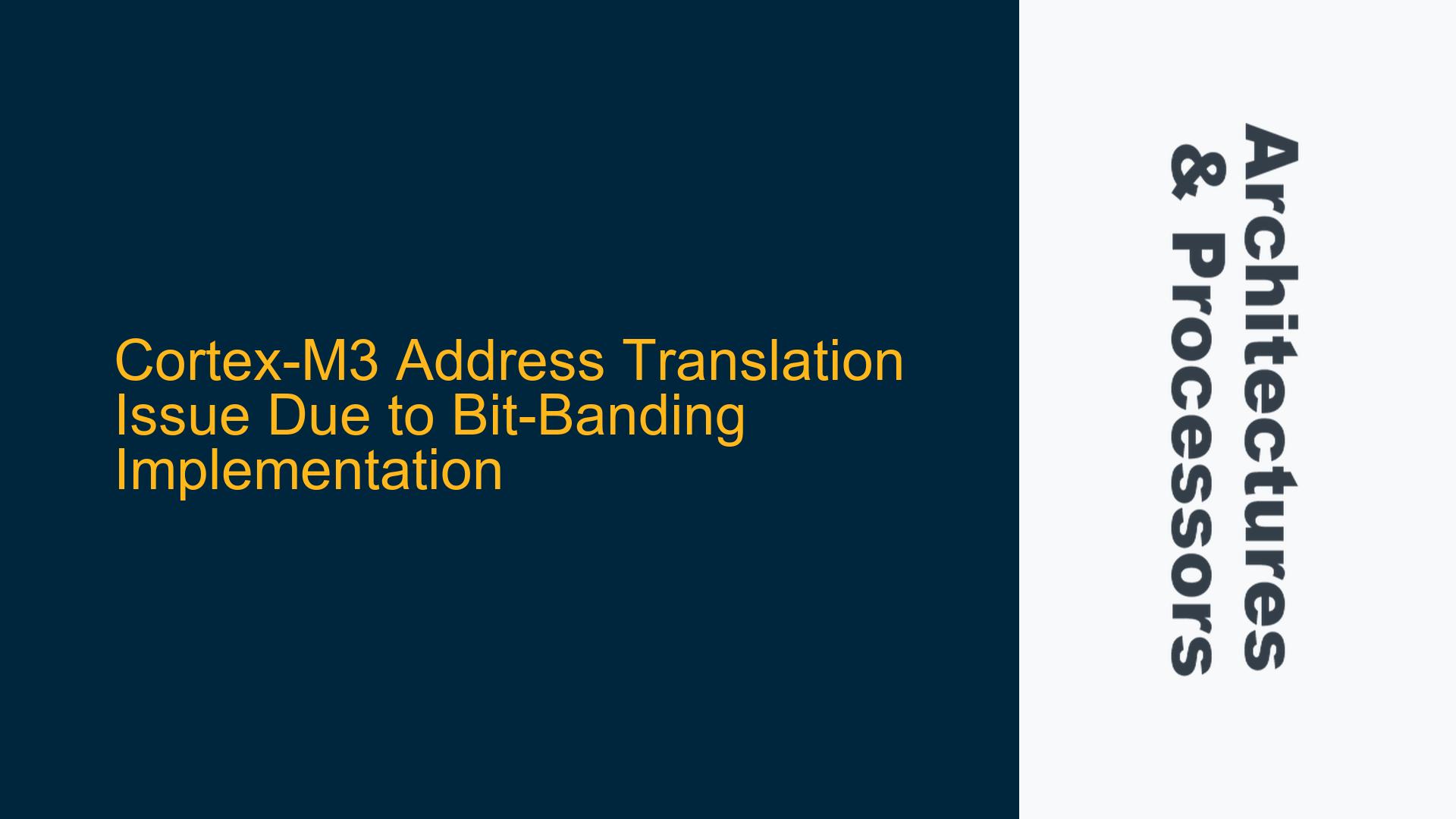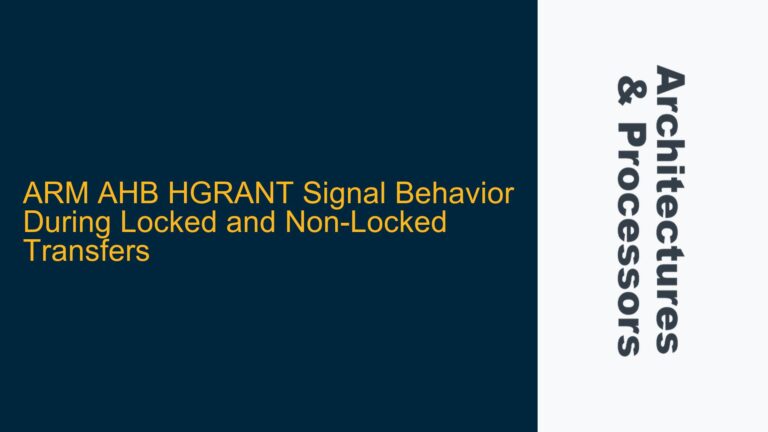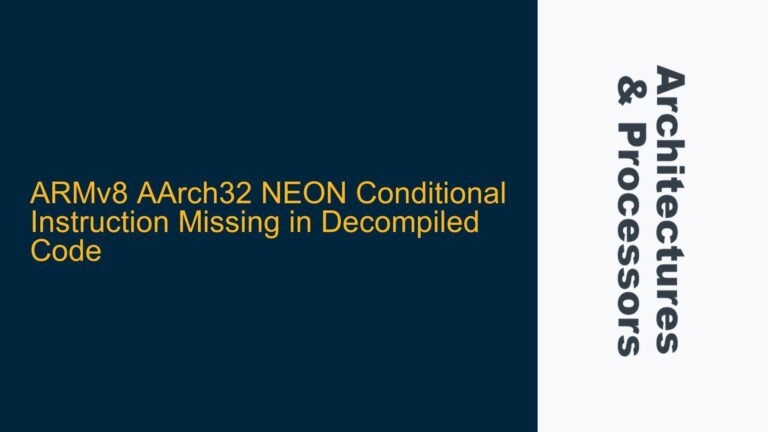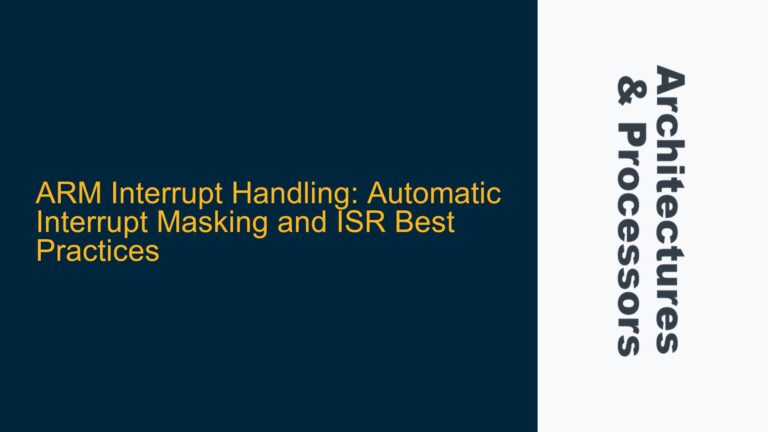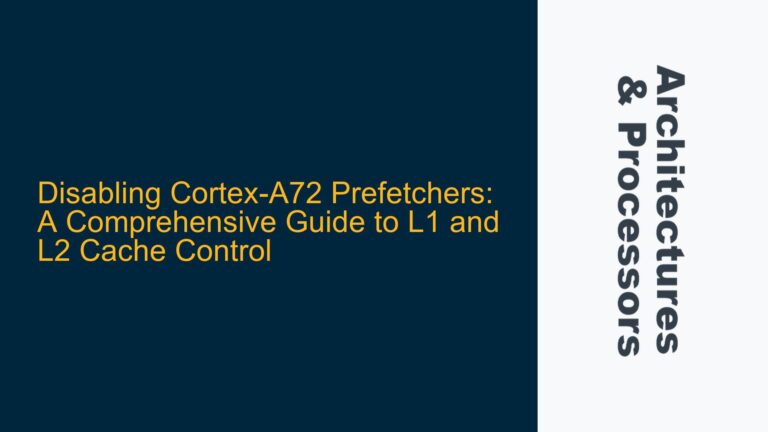Cortex-M3 Address Translation via Bit-Banding Mechanism
The Cortex-M3 processor, a widely used ARM core in embedded systems, is designed with an optional feature called bit-banding. Bit-banding allows individual bits in specific memory regions to be accessed directly through a dedicated alias region. This feature is particularly useful for atomic bit manipulation, as it avoids the need for read-modify-write operations. However, when bit-banding is enabled, it can lead to unexpected address translation behavior, as observed in the case where a memory access to address 0x22800000 is translated to 0x20040000.
The bit-banding mechanism works by mapping a bit-band region (typically in the SRAM or peripheral memory space) to a corresponding bit-band alias region. The Cortex-M3 architecture defines two bit-band regions: one in the SRAM space (starting at 0x20000000) and another in the peripheral space (starting at 0x40000000). Each bit in the bit-band region is mapped to a 32-bit word in the bit-band alias region. The address translation formula for bit-banding is as follows:
AliasAddress = BitBandBase + (ByteOffset × 32) + (BitNumber × 4)
Where:
BitBandBaseis the base address of the bit-band alias region (0x22000000for SRAM or0x42000000for peripherals).ByteOffsetis the byte offset of the target bit in the bit-band region.BitNumberis the bit position within the target byte.
In the reported issue, the address 0x22800000 falls within the SRAM bit-band alias region (0x22000000 to 0x23FFFFFF). The translation to 0x20040000 indicates that the processor is interpreting the access as a bit-band operation, even though the intention was to perform a standard memory access.
Bit-Banding Implementation and Configuration Parameters
The presence and behavior of the bit-banding feature in a Cortex-M3 implementation depend on the configuration parameters set during the design of the system-on-chip (SoC). These parameters are typically defined in the RTL (Register Transfer Level) code of the Cortex-M3 core and are specified in the integration manual provided by the SoC vendor. One such parameter is BB_PRESENT, which determines whether the bit-banding feature is enabled in the Cortex-M3 core.
In the reported case, the user is working with a virtual prototype environment using Siemens VISTA, which emulates the Cortex-M3 core. The virtual prototype does not explicitly enable bit-banding, but the observed behavior suggests that the feature is active. This discrepancy indicates that the bit-banding functionality might be enabled by default in the VISTA library or that the configuration parameters are not being correctly applied during model generation.
To confirm whether bit-banding is enabled, the user should consult the integration manual for the specific Cortex-M3 implementation being used. If the manual is unavailable, as in this case, the user can infer the presence of bit-banding by analyzing the address translation behavior. The translation from 0x22800000 to 0x20040000 aligns with the bit-banding formula, confirming that the feature is active.
Disabling Bit-Banding and Resolving Address Translation Issues
To resolve the unintended address translation issue, the bit-banding feature must be disabled or bypassed. This can be achieved through several approaches, depending on the system configuration and the tools available.
1. Modifying RTL Configuration Parameters
If the Cortex-M3 core is being integrated into a custom SoC, the bit-banding feature can be disabled by setting the BB_PRESENT parameter to 0 in the RTL code. This requires access to the RTL source files and the ability to regenerate the core with the updated configuration. In the reported case, the user is working with a virtual prototype, so this approach may not be feasible unless the VISTA library supports RTL-level customization.
2. Adjusting Memory Access Patterns
If disabling bit-banding is not an option, the user can modify the memory access patterns to avoid the bit-band alias regions. For example, accessing memory outside the 0x22000000 to 0x23FFFFFF range will prevent the Cortex-M3 from interpreting the access as a bit-band operation. However, this approach may not be practical if the target memory region is fixed or if the application requires access to the bit-band alias regions.
3. Using Memory Protection Unit (MPU) Settings
The Cortex-M3 includes a Memory Protection Unit (MPU) that can be configured to control access to specific memory regions. By configuring the MPU to restrict access to the bit-band alias regions, the user can prevent unintended address translation. The MPU settings in the reported case are as follows:
SCS.MPU.RegionBaseAddr = ((unsigned int) 0x20000000) | REGION_VALID | 5;
SCS.MPU.RegionAttrSize = FULL_ACCESS | CACHEABLE | BUFFERABLE | REGION_512M | REGION_ENABLED;
SCS.MPU.Ctrl |= 1;
These settings enable the MPU and define a memory region starting at 0x20000000 with a size of 512 MB. However, the MPU configuration does not explicitly address the bit-band alias regions. To prevent bit-band translation, the user can define additional MPU regions that exclude the alias regions or explicitly mark them as non-accessible.
4. Consulting Vendor Support
If the above approaches do not resolve the issue, the user should consult the vendor or tool provider for further assistance. In the reported case, the user is using Siemens VISTA, so reaching out to Siemens support with details of the issue and the observed behavior is recommended. The support team can provide guidance on configuring the virtual prototype to disable bit-banding or adjust the memory mapping to avoid unintended translations.
5. Verifying Address Translation Behavior
To confirm that the bit-banding feature is the root cause of the address translation issue, the user can perform the following steps:
- Access a memory address outside the bit-band alias regions and verify that the access is not translated.
- Access a memory address within the bit-band alias regions and compare the observed address with the expected address using the bit-banding formula.
- Disable the MPU and repeat the memory accesses to determine if the MPU settings are influencing the translation behavior.
By systematically analyzing the address translation behavior and adjusting the system configuration, the user can resolve the unintended address translation issue and ensure that memory accesses are performed as expected.
Conclusion
The Cortex-M3’s bit-banding feature, while useful for atomic bit manipulation, can lead to unintended address translation if not properly configured or understood. In the reported case, the translation of 0x22800000 to 0x20040000 is a clear indication of bit-banding activity. By understanding the bit-banding mechanism, reviewing the system configuration, and applying the appropriate fixes, the user can resolve the issue and achieve the desired memory access behavior. Whether through RTL parameter adjustments, MPU configuration, or vendor support, addressing the root cause of the translation issue ensures reliable and predictable operation of the Cortex-M3-based system.
